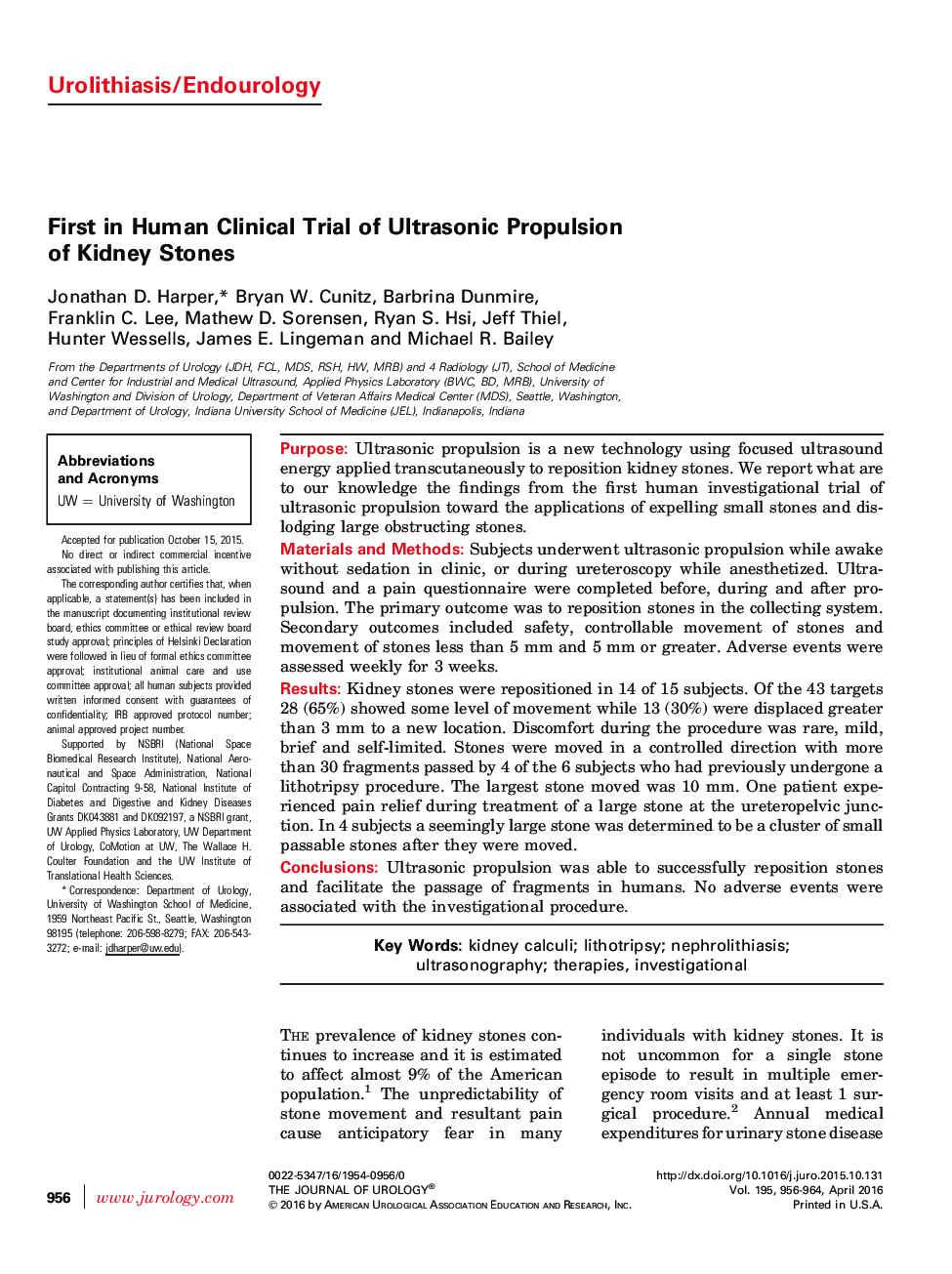| کد مقاله | کد نشریه | سال انتشار | مقاله انگلیسی | نسخه تمام متن |
|---|---|---|---|---|
| 3858546 | 1598878 | 2016 | 9 صفحه PDF | دانلود رایگان |
PurposeUltrasonic propulsion is a new technology using focused ultrasound energy applied transcutaneously to reposition kidney stones. We report what are to our knowledge the findings from the first human investigational trial of ultrasonic propulsion toward the applications of expelling small stones and dislodging large obstructing stones.Materials and MethodsSubjects underwent ultrasonic propulsion while awake without sedation in clinic, or during ureteroscopy while anesthetized. Ultrasound and a pain questionnaire were completed before, during and after propulsion. The primary outcome was to reposition stones in the collecting system. Secondary outcomes included safety, controllable movement of stones and movement of stones less than 5 mm and 5 mm or greater. Adverse events were assessed weekly for 3 weeks.ResultsKidney stones were repositioned in 14 of 15 subjects. Of the 43 targets 28 (65%) showed some level of movement while 13 (30%) were displaced greater than 3 mm to a new location. Discomfort during the procedure was rare, mild, brief and self-limited. Stones were moved in a controlled direction with more than 30 fragments passed by 4 of the 6 subjects who had previously undergone a lithotripsy procedure. The largest stone moved was 10 mm. One patient experienced pain relief during treatment of a large stone at the ureteropelvic junction. In 4 subjects a seemingly large stone was determined to be a cluster of small passable stones after they were moved.ConclusionsUltrasonic propulsion was able to successfully reposition stones and facilitate the passage of fragments in humans. No adverse events were associated with the investigational procedure.
Journal: The Journal of Urology - Volume 195, Issue 4, Part 1, April 2016, Pages 956–964
